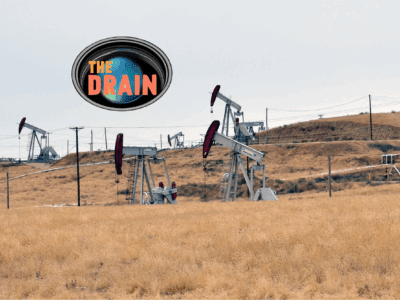Two Years and Counting: Trump at Mid-Term
Trump has been in office for nearly two years. Where do things stand?
In September 2017 – that seems so long ago! — Eric Biber and I released a report assessing the state of play in environmental issues 200 days into the Trump Administration, based on an earlier series of blog posts. As we end Trump’s second year, it’s time to bring that assessment up to date. This is the first of three posts examining what Trump has done (and hasn’t done) in terms of environment and energy.
For this first post, I’ll follow the same outline as the 9/17 report but omit a lot of the detail. It follows the same outline as the previous report but omits a lot of the detail.
Legislation. Eric and I considered substantive legislative changes very unlikely although potentially very damaging. Almost no substantive changes have made it through Congress. The one exception was the provision in the Senate tax bill for opening up ANWR for drilling, which was able to use the reconciliation procedures since it will generate revenue.
Budget. We viewed this as a likely method of undermining environmental protection. Fortunately, the Trump Administration has not succeeded in getting the major cuts to EPA that Trump was seeking. Small cuts will still prove harmful but are not as draconian.
Pollution and Climate Change. We pointed out that regulatory rollbacks would be harder to achieve than some Trump Administration officials seemed to think because of the need to comply with rule-making procedures and assemble sufficiently strong justifications to survive judicial review. The Administration is trying hard to roll back important rules protecting wetlands and limiting carbon emissions, but it remains to be seen how these efforts will fare in court. There have been a whole barrage of proposed regulations at this point, but the Administration may be stretched thin trying to finalize them all quickly. Some egregious proposals, like the “national security” bailout for coal plants, have been shelved. So far, the courts have not been supportive of the Administration’s efforts to delay or suspend regulations. We’ll have to see how this carries over to the actual rollbacks.
Enforcement. Lack of government enforcement is impossible for courts to police. In the environmental area, there’s a backstop method of enforcement whereby citizens and states can bring enforcement actions. Our predictions have proved correct in this area, with a sharp decline in federal enforcement efforts. If they had their way, the Trump appointees would probably prefer zero enforcement.
Public Lands. One of Trump’s efforts is to eliminate protections of public lands so they can be opened to other uses, especially mining and oil drilling. Although a lot depends on what statutes apply to particular tracts of public land, the executive branch does have discretion in land management. Zinke is certainly trying hard to eliminate protections, but it’s too soon to tell to what extent he’ll succeed. Eric Biber has blogged quite a bit about this, and he’s more expert than I am on the finer points of public lands law.
Executive Orders. Most of Trump’s executive orders were really just instructions to agencies; they didn’t actually have any direct legal effect. We are seeing a couple of exceptions, however. The first is the effort to reduce or eliminate some national monuments through presidential decree. The other is imposition of tariffs on importers of solar panels, though so far these have not been as harmful to the industry as feared. Some other executive orders, such as the 2-for-1 executive order, would be important except that they simply order his appointees to do what they really want to do anyway: repeal old regulations and avoid any new ones.
State and Local Action. We viewed actions by state and local governments as the best available way of making environmental progress during the Trump years. If anything, state and local efforts have exceeded expectations, particularly in the area of renewable energy. Because the Democrats gained governorships and state legislative seats in the mid-terms, this trend will accelerate.
Overall, things have been really bad, but they could have been much worse, especially if Congress had adopted Trump’s draconian budget cuts or gutted the major environmental statutes.
Next up: Putting Trump in Historical Perspective.
Reader Comments
2 Replies to “Two Years and Counting: Trump at Mid-Term”
Comments are closed.






Dear Dan,
I heard on the news that “Yellow Jackets” in France are protesting carbon taxes on fuel which were imposed pursuant to the Paris Agreement. Apparently Yellow Jackets clearly understand that carbon taxes are fake mitigation with no proven effect on climate, and they object to paying for official fraud. Can anyone condemn them?
The Yellow Jacket’s burning tires illuminate the futility of climate mitigation scams that cannot justify their enormous penalties on society.
France, on their way to becoming a 3rd world country chants. WE WANT TRUMP
https://twitter.com/HorseRacingCOO/status/1069438669562494976